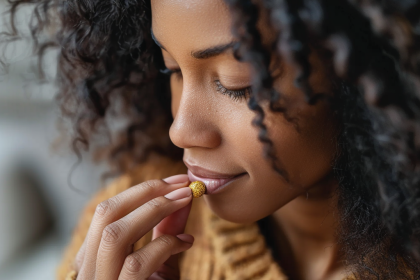House parties present unique risks for young people, especially in private spaces like bedrooms. While these gatherings offer opportunities for socializing, certain areas demand extra caution. Understanding these risks helps parents guide their children toward safer choices during social events, potentially preventing dangerous situations before they occur.
Private spaces create unsafe environments
Bedrooms at parties create environments where oversight disappears and risky behavior escalates. The privacy these spaces offer can lead to dangerous situations involving alcohol, drugs, or peer pressure. Even well-intentioned gatherings can quickly turn unsafe when supervision vanishes, particularly when mixed with common party elements like loud music and darkened spaces.
Young people often feel pressure to participate in activities they would normally avoid, particularly in isolated settings. The desire to fit in or avoid embarrassment may override their better judgment, especially when separated from the main group. This pressure intensifies in private spaces where group dynamics shift and normal social barriers break down.
Protection from unwanted encounters
Private rooms frequently become gathering spots for smaller groups, creating opportunities for inappropriate behavior or unwanted advances. These situations can escalate quickly, leaving young people vulnerable to uncomfortable or dangerous encounters. The isolation of bedrooms removes the natural protection that comes from being in visible, public spaces.
Staying in public areas surrounded by friends provides natural protection through visibility and group safety. Open spaces allow quick exits and help maintain clear boundaries during social interactions. This visibility acts as a deterrent to those who might otherwise attempt to take advantage of private situations.
Peer pressure and group dynamics
Small, private groups amplify peer pressure’s influence. Without the broader social circle present, young people face stronger pressure to participate in risky activities. This pressure intensifies when combined with substances or group dynamics that can shift rapidly in enclosed spaces.
The bedroom environment removes helpful deterrents like parental supervision or concerned friends. What starts as innocent socializing can rapidly transform into situations where young people feel trapped or pressured to make poor choices. The isolation can make it harder to resist peer pressure or seek help when needed.
Digital age reputation risks
Modern technology means private moments rarely stay private. Social media and smartphones create permanent records of party behavior, even behind closed doors. Innocent situations can spawn damaging rumors or misunderstandings that affect relationships and future opportunities, including college admissions and job prospects.
Young people need to understand how quickly private actions become public knowledge. Maintaining a positive reputation requires avoiding situations where actions might be misinterpreted or documented without consent. The digital footprint created at parties can follow them long into adulthood.
Property and liability issues
Bedrooms contain personal belongings and valuable items. Presence in these areas during parties can lead to accusations of theft or damage, even when unwarranted. Young people might face blame for missing items simply because they were in private spaces when something disappeared.
Staying in common areas demonstrates respect for hosts and their property while avoiding potential complications. This awareness builds trust and shows maturity in social situations. It also protects against false accusations that could arise when valuable items go missing during parties.
Effective parent-child communication
Parents can approach these discussions thoughtfully to ensure their message resonates without creating resistance or rebellion:
Building trust requires ongoing dialogue about party safety throughout adolescence. Parents should:
- Create open communication channels
- Listen without judgment
- Share relevant experiences
- Offer practical solutions
- Maintain supportive attitudes
- Respect growing independence
Practical safety strategies
Help young people develop specific skills for avoiding private spaces and maintaining safety at parties:
Stay connected:
- Keep phones charged and accessible
- Establish regular check-in procedures
- Know emergency contacts
- Have backup transportation plans
- Stay with trusted friends
Maintain awareness:
- Monitor drink consumption
- Watch for concerning behavior
- Know party locations
- Understand exit routes
- Trust instincts about danger
Creating safety networks
Young people need support systems to handle party situations effectively:
Trusted connections include:
- Close friends who share safety values
- Reliable family members
- Understanding adults
- Emergency contacts
- Safe ride options
Building long-term judgment
Teaching young people about party safety builds confidence and judgment that extends beyond immediate situations. These discussions help them develop:
Critical thinking skills:
- Risk assessment abilities
- Boundary setting
- Peer pressure resistance
- Emergency response plans
- Social awareness
The goal extends beyond immediate safety to helping young people develop lifelong skills for navigating social situations safely and confidently. Regular discussions about party safety create foundations for responsible behavior and smart choices throughout adolescence and into adulthood.
Parents who maintain open dialogues about party safety help their children build crucial decision-making skills while demonstrating trust and support. This balanced approach helps young people feel confident in their ability to handle social situations while knowing they have backup when needed.
This story was created using AI technology.











